Not totally awful.
The early history of zoom lenses on 35mm film cameras is long and not distinguished.
It starts in 1959 with the 36-82mm f/2.8 Zoomar which mounted on the contemporary Voigtländer Bessamatic SLR. The Bessamatic used a leaf shutter inside the lens mount, a fact which made it difficult to make really wide lenses for it, but kudos to the company for retaining American Zoomar to design a zoom lens, and one with a fixed, large aperture at that.
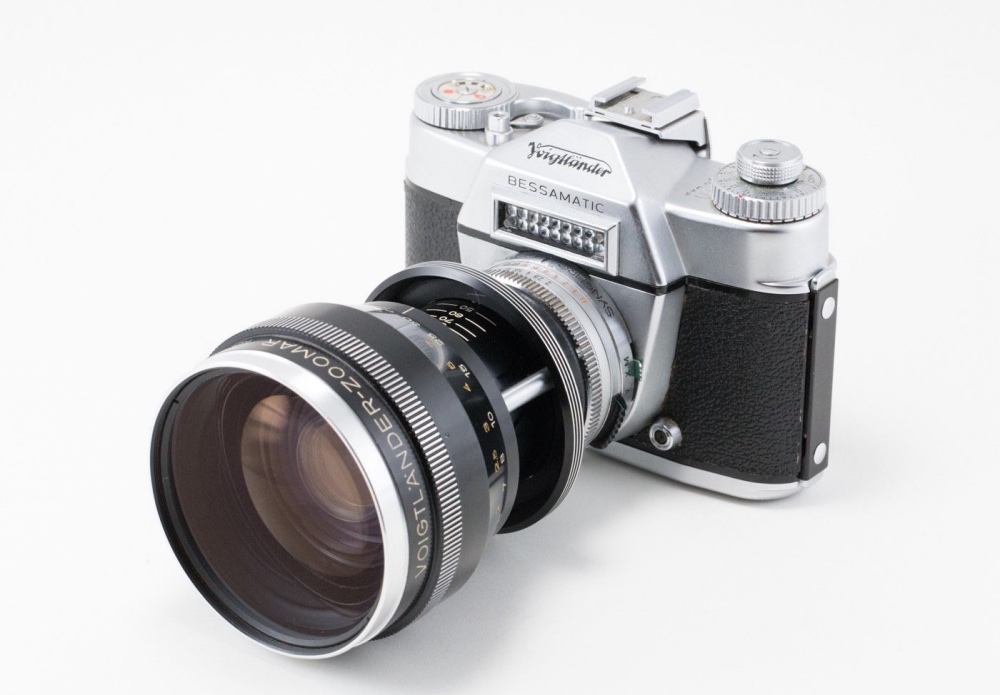
Bessamatic with 36-82mm f/2.8 Zoomar mounted. No strap lugs on the body ….
This monster lens was an ugly duckling with styling nothing like the nicely finished factory lens range (35mm all the way through 350mm) and performance was so-so, but you could claim to be the only one on the block with this ugly duckling. Plus, the optic came with this comical depth-of-field calculator so that you could be sure of getting it right despite the multiple aberrations:
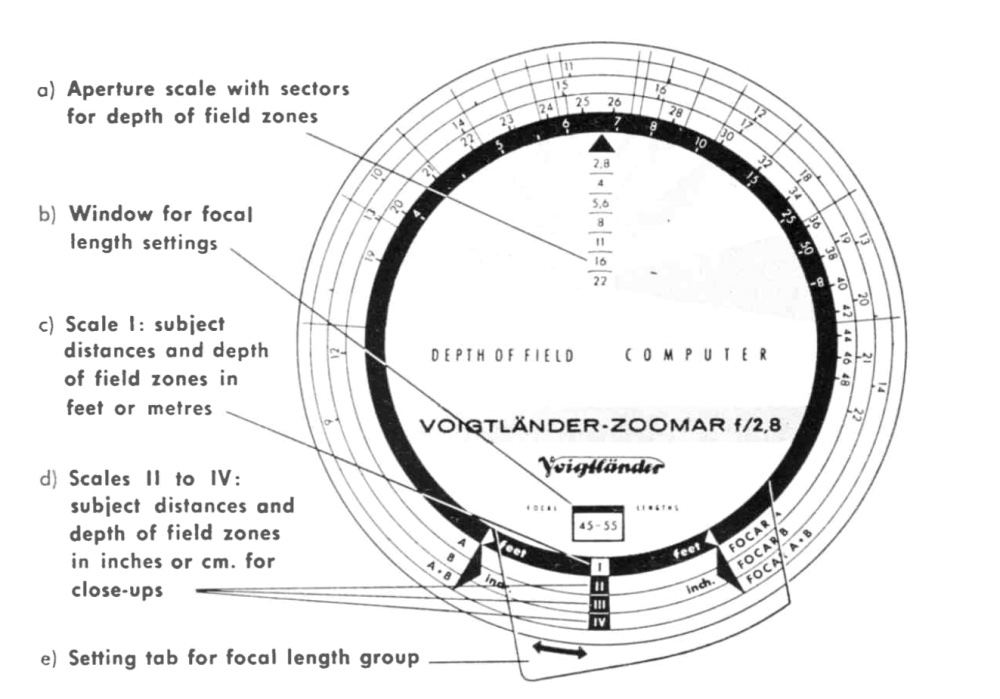
Included with every Zoomar, this DOF calculator. Reminiscent of Dr. Strangelove’s circular slide rule.
Nikon was a far better lens designer than American Zoomar, so when they first marketed their 43-86mm f/3.5 Nikkor Zoom in February, 1963 it was elegantly executed and matched, as a whole, the rest of the burgeoning Nikkor lens range:
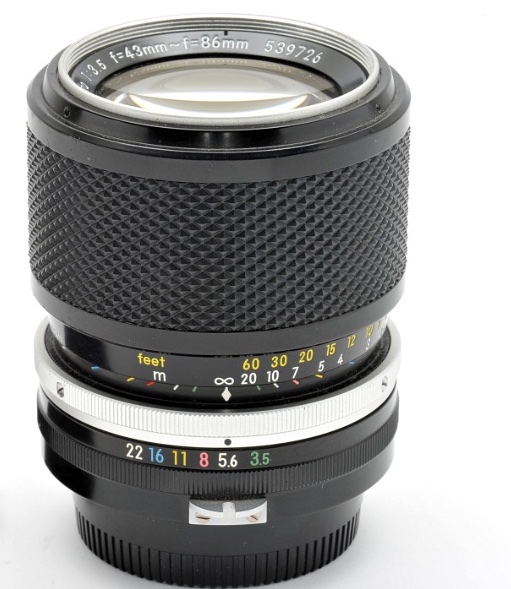
Mark I of the 43-86mm Nikkor.
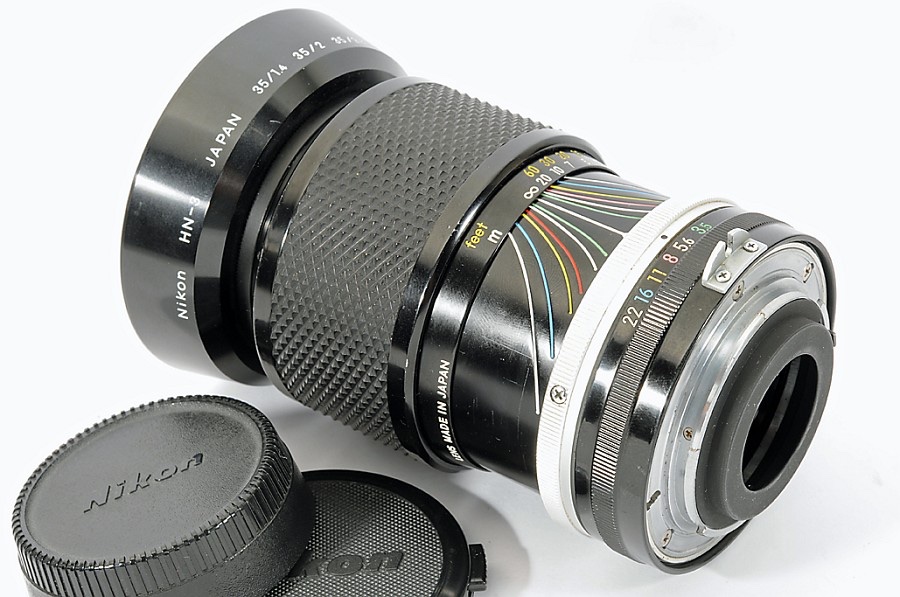
Nikon’s elegant solution to the depth-of-field riddle.
And the elegant solution to depth-of-field determination with those lovely curving, colored lines, was a first. A tad different from the Zoomar’s calculator!
Arguably one of the most beautifully executed of all Nikkors its performance was, by general agreement, the worst of any lens Nikon ever sold! Despite that, over 150,000 made it out the door at Kogaku, Tokyo. The lens was compactly sized and beautifully made, not to mention revolutionary, building on Voigtländer’s pioneering lead with something far more useable. This design comprised 9 elements in 7 groups and as Nikon’s site attests, the manufacturer was rightly proud of its achievement. The irony of the lens’s poor optical performance is that 99+% of images are now displayed on small computer or cellphone screens, for which purpose it’s perfectly adequate.
Nikon had another go at the design, releasing Mark II in November 1975, now with 11 elements in 8 groups, the description of the lens was moved from inside the filter ring to around the outside barrel, making identification easy. This was a much better optical formula and the beauty of the marketplace is that the curse of the earlier design similarly affected the market price of used Mark II lenses, meaning all are dirt cheap. Mine ran me $69 shipped, in ‘as new’ condition. Many of these have been really beaten up and I simply cannot see saving $30 on a beater when your pride and joy in a mint example can be had for little more. It probably makes sense to use a lens hood for protection as well as flare control, given how prominent the front element is, and the standard Nikon 50mm collapsible rubber hood HR-2 can be found new for under $20. Amazon lists an ‘Amazon Basics’ 52mm UV filter for further protection for under $6. I bought both.
An even greater number of the Mark II variant was manufactured with the last versions – mine – coming Ai equipped from the factory. The cut-outs in the aperture ring’s coupling claw for old Nikon Photomic metered prisms and cameras like the Nikkormats are there to throw as much light as possible on the smaller duplicate rear aperture scale which is read through the finder via a reflecting mirror in later bodies like the FM and FE. Nikon called this ADR or Aperture Direct Readout, a clunky solution to seeing the aperture in the viewfinder. It works …. in good light. As usual I will be discarding the claw after installing a CPU, which will allow the recording of EXIF data on digital bodies.
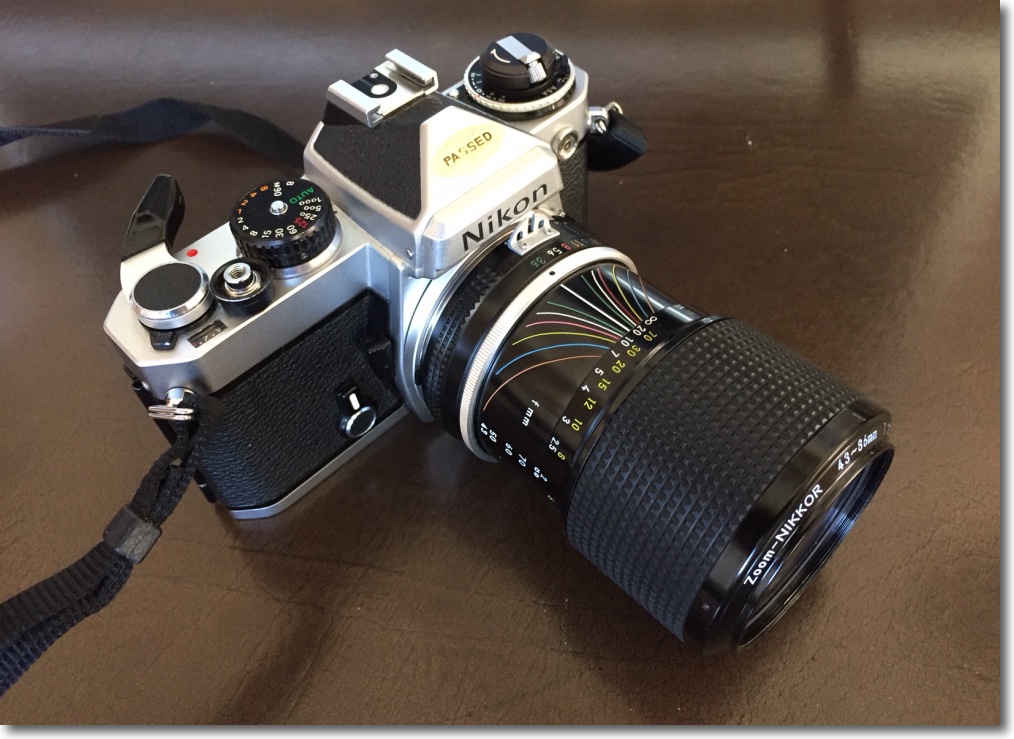
My ‘as new’ condition 43-86mm Zoom Nikkor on the Nikon FE film body.
Mounted on the small FE body the fine ergonomics of the body are nicely complemented by this compact and beautifully made zoom lens. The construction quality of the lens is exceptional as regards fit and finish, no wobbles, no rattles and the optic feels like one solid piece of glass and metal. Those are real, paint filled engravings you see, not screen printed garbage. Gorgeous.
I discuss lens correction profiles and CPU installation in Part II, along with test images.